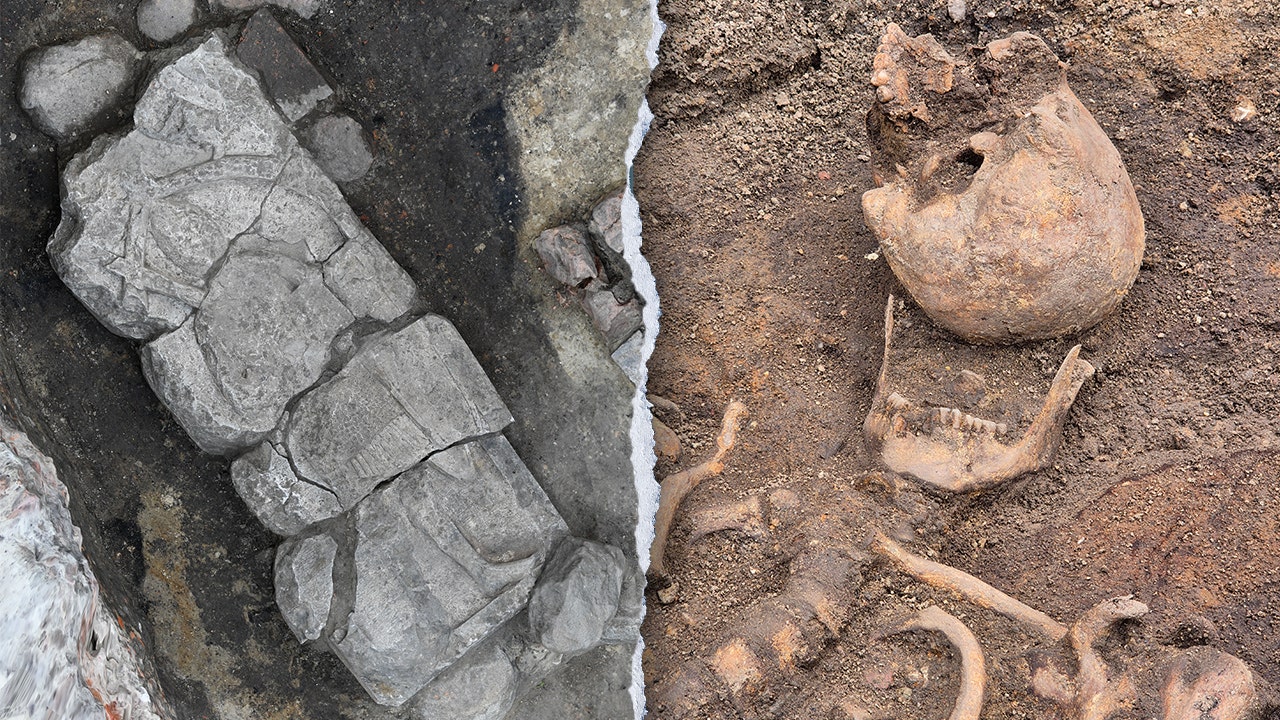Medieval Knight's Tomb Unearthed Beneath Polish Ice Cream Parlor: 'Extraordinary Find'

Discovery of a Medieval Knight's Burial in the Heart of Gdańsk
In a remarkable archaeological find, Polish archaeologists have uncovered the burial site of an elite knight in astonishing condition, right in the middle of a bustling tourist city. The discovery was made in Gdańsk, Poland, a historic city known for its vibrant architecture and scenic location along the Motława River. This groundbreaking revelation has captured the attention of historians and archaeologists alike.
The tomb was found beneath the former site of Lodziarnia Miś, a beloved ice cream parlor that once stood at the intersection of Sukiennicza and Grodzka streets. The area was once a 13th-century cemetery adjacent to the remains of Gdańsk's oldest known church, which is now recognized as the oldest wooden church ever identified in Poland. This church was built using oak wood cut down in 1140, as determined by dendrochronological dating.
A Significant Historical Site
The tombstone, dating to the late 13th or 14th century, was buried within an early medieval stronghold located in the city's historic center, known as Śródmieście. Archaeologists described the site as a "key place of power, faith and burial" in medieval Gdańsk. The tomb likely belonged to an elite knight, as it was constructed from limestone imported from the Swedish island of Gotland. The carvings on the tombstone were skillfully crafted, indicating the work of a high-quality artisan.
Images of the discovery reveal the faint image of a male figure standing upright, clad in full chainmail armor and leggings. He holds a sword and shield, with the head, left foot, and many details of the armor and weapons still visible despite some damage. The tombstone, although made from soft limestone—a material known for its fragility—has remarkably weathered the centuries.
Uncovering the Knight’s Legacy
ArcheoScan noted that the tombstone is surprisingly well-preserved, considering its age and material. The organization emphasized that such tombstones were rare in Poland during that time and were typically reserved for important individuals. However, there is no evidence linking the figure to the Teutonic Order, and no inscriptions confirm this connection.
During the excavation, archaeologists carefully lifted the tomb slab and uncovered the knight’s complete skeleton. Initial examination revealed that the warrior stood between 5'5" and 5'9" tall, which was above average for the time. The bones were found in anatomical alignment, confirming the tombstone marked the actual burial site. While the skeleton is well-preserved, no grave goods were found in association with the body.
Experts hope to conduct additional research, including genetic analyses to determine the knight's age at death and his health history. Further isotopic analysis may also provide insights into his lifestyle and diet, as well as any potential links to other burials. Plans are also underway for a facial reconstruction of the knight, offering a glimpse into the past.
A Major Archaeological Achievement
ArcheoScan stressed that this discovery is "one of the most important archaeological finds in Poland in recent years." It sheds light on burial customs and medieval symbolism, providing valuable insights into the history of Gdańsk. The organization highlighted that figural tombstones showing full-length armored figures are rare in Poland, especially from the 13th–14th centuries.
Together, the tombstone, the church, and the cemetery help tell a rich and layered story of early medieval Gdańsk. This remarkable find not only adds to our understanding of the region's history but also highlights the significance of preserving and studying such historical sites.
Post a Comment for "Medieval Knight's Tomb Unearthed Beneath Polish Ice Cream Parlor: 'Extraordinary Find'"
Post a Comment